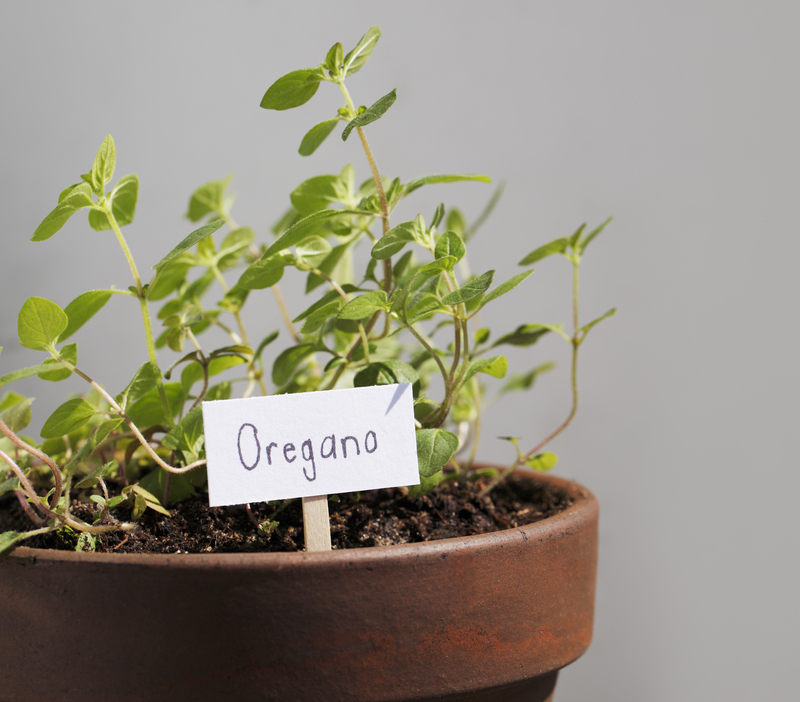Blossoming Initiatives: Gardens Counter Climate Change
Posted on 13/08/2025
Blossoming Initiatives: Gardens Counter Climate Change
Can a humble backyard garden or a vibrant urban greenspace help slow the devastating impacts of climate change? As our world continues to heat up, gardening for climate change mitigation has blossomed from a pleasant pastime into a vital strategy for individuals, communities, and cities striving for resilience. This article explores how garden initiatives combat climate change, the diverse techniques involved, their scientific basis, and practical steps for you to join the movement.

Why Gardens Matter in the Fight Against Climate Change
Our planet is under increasing pressure from the twin threats of rising temperatures and environmental degradation. While large-scale policies and green technologies are vital, there is growing recognition that gardening-based solutions to climate change are an essential part of our toolkit. Here's why gardens are powerful agents of climate action:
- Carbon Sequestration: Plants capture and store atmospheric carbon dioxide, a leading cause of global warming.
- Urban Cooling: Green spaces help reduce the urban heat island effect, keeping cities cooler during hot spells.
- Promoting Biodiversity: Gardens attract pollinators and wildlife, strengthening local ecosystems against climate stressors.
- Flood Mitigation: Healthy soils and plant roots increase water absorption, reducing runoff and the risk of flooding during extreme weather.
- Food Security: Community and home gardens provide local, low-carbon food, reducing reliance on resource-intensive agriculture.
Scientific Evidence: Gardens as Carbon Sinks
Research confirms that both urban and rural gardens can sequester meaningful amounts of carbon dioxide. Trees, shrubs, and even turfgrass absorb CO2 from the air and store it in their tissues and root systems. Moreover, healthy garden soils--enriched with compost and organic matter--can store carbon underground for years.
In fact, a Royal Horticultural Society study found that home gardens in the United Kingdom store an estimated 206 kg of carbon per square meter of soil. This figure highlights the potential of climate-positive gardening initiatives worldwide.
Exploring Blossoming Garden-based Solutions to Climate Change
The scope of gardens that counter climate change is vast, ranging from simple window boxes to expansive city parks. Below, we examine key initiatives and techniques that maximize gardens' climate benefits.
1. Community Gardens: Cultivating Green Connections
Community gardens harness collective power, transforming vacant lots or underutilized land into vibrant greenspaces. These patches offer multiple climate change solutions through gardening:
- Localized Food Production: Growing fruits, vegetables, and herbs locally slashes food transportation emissions.
- Education Hubs: Community gardens often provide workshops on climate-friendly gardening, waste composting, and ecological stewardship.
- Resilience Networks: These gardens foster social ties, helping communities support one another during climate-driven crises.
2. Urban Greening Projects
Major cities worldwide--from New York's High Line to Singapore's vertical gardens--are implementing urban greening initiatives to combat heat, pollution, and biodiversity loss. The advantages include:
- Temperature Regulation: Parkland and tree canopies can lower surrounding air temperatures by several degrees.
- Stormwater Management: Rain gardens and green roofs absorb and slow stormwater, lessening flood risks.
- Air Purification: Plants filter pollutants, improving air quality and public health.
3. Regenerative Home Gardens
Converting lawns into regenerative gardens is a rapidly growing trend. These gardens go beyond aesthetics--they rebuild soil health, boost drought resilience, and often produce food. Key practices include:
- No-till Gardening: Minimizing soil disturbance preserves soil carbon and supports microbial diversity.
- Cover Cropping: Planting cover crops protects soil from erosion, fixes nitrogen, and locks in carbon.
- Composting: Turning kitchen and yard waste into compost diverts methane-generating waste from landfills and enriches garden beds.
- Native Planting: Native species require less water and fertilizer--essential for climate adaptation.
4. Permaculture and Agroforestry Approaches
Permaculture is a holistic design system focused on working with nature. Agroforestry integrates trees, shrubs, and crops in mutually beneficial arrangements. These approaches play a growing role in climate change mitigation through gardening by:
- Increasing Carbon Capture: Multi-layered planting structures mimic forests, maximizing carbon storage above and below ground.
- Enhancing Biodiversity: Diverse plantings create more resilient, pest-resistant ecosystems.
- Building Drought Resistance: Deep-rooted perennials and mulch help soils retain moisture, vital as climate becomes less predictable.
5. School and Youth Gardening Programs
Educating the next generation is fundamental for lasting climate action. School gardens teach students about ecosystems, healthy food, and environmental stewardship, planting seeds for lifelong climate resilience gardening.
Gardens in Action: Inspiring Examples from Around the World
Communities and organizations globally are using garden initiatives to fight climate change. Here's a look at some pioneering projects:
New York City: MillionTreesNYC
Over a decade, this program leveraged citizen volunteers to plant and care for one million trees across New York's five boroughs. The increased tree canopy has improved air quality, reduced cooling costs, and set an example for large-scale urban reforestation.
Singapore: Gardens by the Bay
This stunning public park showcases "Supertree" structures covered in thousands of plants. They help moderate temperatures, capture rainwater, and house photovoltaic cells, blending natural and technological solutions.
UK: RHS Greening Grey Britain
Campaigns have encouraged tens of thousands to convert driveways and paved areas into garden spaces, increasing local biodiversity and helping soak up rainwater in flood-prone cities.
India: Hyderabad's Urban Forests
The city government, NGOs, and activists have collaborated to replant forests and open small urban parks, creating "urban lungs" that lower pollution and boost residents' wellbeing.
How to Start Your Own Climate-Resilient Garden
You don't need to be a botanist or have acres of land to join the gardening-for-climate-change movement. Here's how you can start making a difference at home, in your neighborhood, or in your city:
Choose Climate-Resilient and Native Plants
- Opt for native species that thrive naturally in your region--these plants require less water, fertilization, and intervention.
- Mix perennial flowers, grasses, and shrubs: Perennials return year after year, building soil health and carbon stores.
- Embrace diversity: A range of plant types helps your garden bounce back from pests and extreme weather events.
Enrich and Protect Your Soil
- Add organic matter like compost or leaf mulch--healthy soil is a major carbon sink.
- Minimize tilling to maintain soil structure and maximize microbial life.
- Mulch heavily to suppress weeds and cut down water use.
Reduce Lawn Area
Lawns, especially when heavily fertilized and irrigated, can be surprisingly high-carbon. Consider converting part of your lawn into wildflower meadows, vegetable beds, or shrub borders to enhance the climate benefit of your outdoor space.
Harvest Rainwater and Reduce Waste
- Set up rain barrels and use them to water your garden conservatively.
- Compost food and yard waste rather than sending it to the landfill.
Get Involved in Community Garden Initiatives
Volunteer at a local community garden, participate in a city planting project, or start a rooftop or vertical gardening group with neighbors. These collective actions amplify the impact of gardens battling climate change.
Frequently Asked Questions: Gardens & Climate Action
Q: Can small gardens really make a noticeable difference on climate change?
Yes! While an individual garden's impact is modest, when multiplied across neighborhoods, cities, and countries, the carbon absorption, biodiversity, and food security benefits become significant. Moreover, gardens inspire further environmental action and educate others, creating a ripple effect.
Q: Are there specific plants that are best at fighting climate change?
Trees and deep-rooted perennials store the most carbon, while groundcovers and densely planted beds lock carbon into soils. Native species and drought-tolerant plants are excellent choices as they require fewer resources and are more resilient.
Q: How does gardening reduce emissions beyond carbon sequestration?
Gardening supports climate adaptation and mitigation by producing local food, reducing packaging and transport emissions, conserving water, and curbing chemical use. Pollinator-friendly gardens can also reduce the need for pesticides, benefiting broader ecosystems.
Q: What about indoor gardening and climate action?
While indoor gardens are typically too small to sequester much carbon, they can improve indoor air quality, support mental health, and spark a love of nature that inspires bigger changes outdoors.

The Future: Blossoming Together for a Cooler Planet
Gardens are not a silver bullet for global warming, but their collective power is transformative. The growing movement of blossoming climate change initiatives in gardening is a testament to the ability of ordinary citizens, local governments, and organizations to drive positive change from the ground up.
- Encouraging biodiversity and carbon capture, gardens wove into the fabric of daily life can make cities more livable and rural areas more resilient.
- Building community, they inspire stewardship and education, helping current and future generations value and protect our planet.
- Demonstrating practical action, gardens remind us that healthy environments and healthy people go hand in hand.
As climate challenges grow, so too must our commitment to solutions big and small. Whether you're planting a pollinator patch, supporting a tree planting program, or advocating for more green spaces in your city, you are a vital part of the global movement. Let's ensure that the planet's future is not just greener, but truly blossoming with promise.
Resources to Learn More and Take Action
- Royal Horticultural Society - Climate change gardening advice
- American Community Gardening Association - Find or start a community garden
- Green Cities Fund - Urban greening initiatives
- Permaculture Global - Projects, resources, and education
- World Wildlife Fund - Native plant guides
Ready to join the gardening initiatives countering climate change? Start by digging in--your patch of earth could be the beginning of something truly powerful.

